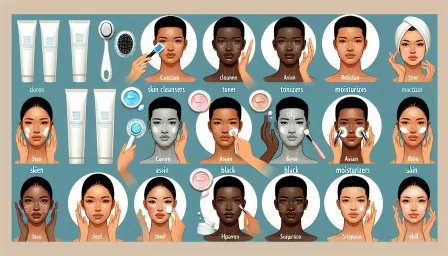Ultimate Guide to Seborrheic Dermatitis Self-Care: Tips and Techniques

Discover comprehensive self-care strategies for managing seborrheic dermatitis. Learn practical tips and techniques to soothe symptoms and promote skin health.
Seborrheic dermatitis is a common, chronic skin condition that mainly affects the scalp, but can also occur in other oily areas of the body, such as the face, chest, and back. Characterized by red, flaky, and often itchy skin, managing this condition requires a comprehensive approach that includes both medical treatment and effective self-care strategies. This guide is designed to provide you with valuable tips and techniques to enhance your seborrheic dermatitis self-care routine, helping you to manage symptoms and maintain skin health.
Understanding Seborrheic Dermatitis
Before diving into self-care practices, it's important to understand what seborrheic dermatitis is and what causes it. Although the exact cause is unknown, factors that may contribute to the condition include an overproduction of skin oil (sebum), an overgrowth of a yeast (Malassezia) that resides in oily areas of the skin, and an inflammatory response. Recognizing the triggers and understanding your skin's needs are crucial steps in effectively managing seborrheic dermatitis.
Self-Care Tips for Seborrheic Dermatitis
Adopting a tailored self-care routine can significantly lessen the symptoms of seborrheic dermatitis. Below are essential tips and techniques to incorporate into your daily regimen:
Keep the Skin Clean and Hydrated
Maintaining a gentle hygiene routine can help control sebum production and minimize flare-ups. Opt for mild, non-irritating cleansers and moisturizers designed for sensitive skin. Avoid harsh soaps and alcohol-based products that can strip the skin of its natural oils and exacerbate symptoms.
Choose the Right Hair and Skin Care Products
Selecting the appropriate products is key in managing seborrheic dermatitis. Look for shampoos containing antifungal ingredients such as ketoconazole, pyrithione zinc, or selenium sulfide to help reduce yeast overgrowth on the scalp. For facial and body care, consider products that contain anti-inflammatory ingredients like aloe vera or tea tree oil to soothe irritated skin.
Manage Stress Levels
Stress is known to worsen seborrheic dermatitis. Incorporating stress-reduction techniques such as yoga, meditation, and regular exercise into your routine can help minimize flare-ups and improve overall skin health.
Adapt Your Diet
Although research on the link between diet and seborrheic dermatitis is still evolving, some individuals report improvement in symptoms with dietary changes. Consuming a balanced diet rich in anti-inflammatory foods such as omega-3 fatty acids (found in fish and flaxseeds), antioxidants (found in fruits and vegetables), and minimizing intake of processed foods and sugars may be beneficial.
Maintain a Consistent Care Routine
Consistency is crucial when it comes to managing seborrheic dermatitis. Stick to your skincare and hair care regimen, even when symptoms seem to improve, to prevent potential relapses.
Seek Professional Advice
While self-care strategies are vital, consulting with a dermatologist is essential for an accurate diagnosis and tailored treatment plan. They may prescribe topical or oral medications to help manage the condition effectively.
Advanced Techniques and Treatments
In addition to basic self-care, there are advanced techniques and treatments that may offer further relief:
Phototherapy
For severe cases, a dermatologist may recommend phototherapy using ultraviolet light. This treatment can help reduce the inflammation and yeast overgrowth associated with seborrheic dermatitis.
Medicated Shampoos and Topicals
Regular use of medicated shampoos and topical treatments as prescribed by a healthcare provider is crucial for keeping symptoms at bay, especially for scalp involvement.
Alternative Therapies
Some individuals find relief through alternative therapies such as herbal treatments, acupuncture, and probiotics. However, it's important to discuss these with your dermatologist before trying them to avoid potential side effects or interactions with other treatments.
Conclusion
Successfully managing seborrheic dermatitis requires a multimodal approach that includes medical treatment, effective self-care practices, and lifestyle adjustments. By understanding your triggers, maintaining a consistent care routine, and working closely with a dermatologist, you can significantly improve your quality of life and keep symptoms under control. Remember, while seborrheic dermatitis is a chronic condition, with the right strategies, it is manageable.



























